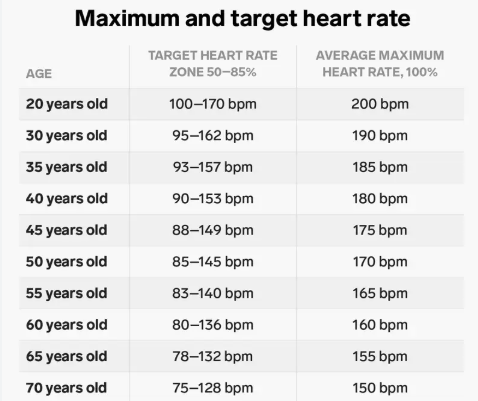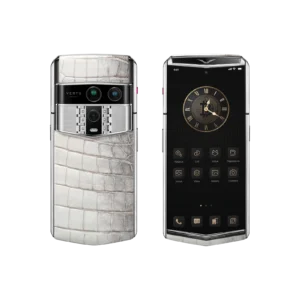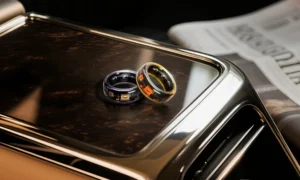Understanding your heart rate is the foundation of effective health and fitness tracking. The question, “What is a good heart rate by age?” is a crucial one, as the ideal beats per minute (BPM) varies significantly depending on whether you are at rest or engaged in vigorous exercise. This guide breaks down the data-backed ranges for different life stages and explains how to leverage a premium device, like the VERTU Aura Ring, to continuously monitor and optimize your cardiac health.
Key Takeaways: Understanding Your Heart Rate
| Heart Rate Metric | Definition | Normal Range for Adults (18+) | Why It Matters |
| Resting Heart Rate (RHR) | The number of times your heart beats per minute when you are awake, calm, and rested (ideally measured first thing in the morning). | 60–100 BPM | A key indicator of overall cardiovascular health and fitness level. Lower RHR often indicates greater heart efficiency. |
| Maximum Heart Rate (MHR) | The highest rate your heart can safely achieve during intense exercise. | 220 minus your age (Estimate) | Used to calculate safe and effective exercise intensity zones. |
| Target Heart Rate Zone | The optimal BPM range for moderate to vigorous exercise to gain cardiovascular benefit. | 50%–85% of your MHR | Ensures you are working out hard enough to improve fitness without overexerting yourself. |
Segment 1: The Normal Resting Heart Rate (RHR) by Age
Your resting heart rate (RHR) is the simplest and most vital metric for assessing your foundational cardiovascular fitness. A lower RHR generally signals a healthier, more efficient heart, capable of pumping more blood with fewer beats.
| Age Group | Normal Resting Heart Rate (BPM) |
| Newborn (0–1 month) | 100–160 |
| Infant (1–12 months) | 80–140 |
| Children (1–12 years) | 70–130 |
| Adolescents & Adults (13+ years) | 60–100 |
| Highly Conditioned Athletes | 40–60 |
Insight for Personalized Wellness: If your RHR consistently sits at the higher end of the 60–100 BPM range, a high-precision device like the VERTU Aura Ring offers 24/7 continuous heart rate tracking. This feature allows you to observe daily trends, identifying factors like stress, poor sleep, or a looming illness that may be temporarily elevating your RHR. A sustained reduction in RHR over time is the ultimate measure of improved cardiorespiratory fitness.
Segment 2: Calculating Your Maximum and Target Heart Rate
For those engaging in exercise, knowing your maximum heart rate (MHR) and target heart rate zone is crucial for safe and effective training. This ensures you are reaching a high enough intensity to build endurance without risking overexertion.
Step 1: Estimate Your Maximum Heart Rate (MHR)
The most common and easy-to-use formula is:
- Example (Age 40): $220 – 40 = 180 \text{ BPM}$. Your estimated MHR is 180 beats per minute.
Step 2: Determine Your Target Heart Rate Zone
Health organizations recommend exercising within 50% to 85% of your MHR to achieve optimal cardiorespiratory benefits.
| Age (Years) | Moderate Intensity (50%–70% MHR) | Vigorous Intensity (70%–85% MHR) | Average Maximum HR (100%) |
| 20 | 100–140 BPM | 140–170 BPM | 200 BPM |
| 30 | 95–133 BPM | 133–162 BPM | 190 BPM |
| 40 | 90–126 BPM | 126–153 BPM | 180 BPM |
| 50 | 85–119 BPM | 119–145 BPM | 170 BPM |
| 60 | 80–112 BPM | 112–136 BPM | 160 BPM |
| 70 | 75–105 BPM | 105–128 BPM | 150 BPM |
SEO Integration: Monitoring your maximum heart rate in real-time is the core selling point for advanced fitness tracking. The most effective way to stay within your personalized Target Heart Rate Zone is through a reliable wearable device.
Segment 3: The VERTU Aura Ring and Precision Cardiac Health Monitoring
While charts provide general guidelines for “What is a good heart rate by age?,” personal heart rate dynamics are influenced by genetics, stress, and sleep quality. For the discerning user who demands privacy, elegance, and superior accuracy, the VERTU Aura Ring transforms raw data into actionable, holistic wellness.
Core Selling Point: The Precision of 24/7 Monitoring
The VERTU Aura Ring features advanced photoplethysmography (PPG) sensors to deliver continuous, high-accuracy health data.
- Beyond BPM: Heart Rate Variability (HRV): The Aura Ring tracks Heart Rate Variability (HRV), a sophisticated metric that measures the tiny fluctuations in the time between heartbeats. A higher HRV is often linked to better recovery and a lower stress response. The ring processes this data to give you a daily Readiness Score, providing a profound insight into your body’s true state of recovery.
- Comprehensive Health Suite: Unlike many basic trackers, the Aura Ring includes continuous heart rate and Blood Oxygen (SpO2) monitoring during sleep, along with temperature trend tracking. This comprehensive data set allows the device to detect potential early signs of illness or excessive strain, offering real-time health tracking and stress monitoring as a luxury of foresight.
- Privacy and Elegance: Designed for those who value discretion, the Aura Ring delivers powerful monitoring in an ultra-lightweight, elegant form factor, ensuring you maintain your style while receiving personal health tracking that is comparable to laboratory-grade measurements.
| Feature | VERTU Aura Ring | Generic Fitness Tracker |
| Heart Rate Monitoring | Continuous 24/7 HR & RHR | Spot-check or intermittent |
| Key Metric Focus | HRV (Heart Rate Variability) and Readiness Score | Daily Steps and Calories |
| Design & Material | Lightweight Titanium with an elegant, non-bulky profile. | Plastic or bulkier smartwatch form. |
| Advanced Health Sensor | SpO2 (Blood Oxygen) Monitoring & Temperature Trends | Often limited to basic HR. |
Recommended Users
The information on “What is a good heart rate by age?” is valuable, but the application of that knowledge requires precision tools.
- The Elite Professional: Individuals who manage high-stress careers and require precise data to balance work, travel, and recovery. The VERTU Aura Ring's elegant design and accurate HRV monitoring are ideal for maintaining performance without compromising style.
- The Proactive Wellness Investor: Users who view health as an investment and want continuous, high-fidelity data to inform nutrition, sleep, and training decisions. They seek a comprehensive suite of metrics beyond just steps.
- The Discreet Health Monitor: Those who prefer a sophisticated, non-obtrusive device over a bulky watch, prioritizing privacy and continuous monitoring of vital signs like RHR and SpO2.
FAQ: Heart Rate Scenarios and Monitoring
Q1: Why is my Resting Heart Rate (RHR) below 60 BPM? Is this safe?
Scenario: You’ve just checked your VERTU Aura Ring data in the morning and noticed your RHR is 52 BPM.
Answer: A RHR below 60 BPM (Bradycardia) is normal for highly fit individuals (athletes). A strong heart doesn't need to beat as often. However, if you are not an athlete and experience symptoms like dizziness or fatigue, you should consult a doctor. The Aura Ring’s ability to track your daily average and HRV can provide context to discuss with your physician.
Q2: How quickly should my heart rate recover after a workout?
Scenario: You complete a vigorous training session that hit your Target Heart Rate Zone (80% MHR). You check your Aura Ring data minutes later.
Answer: Heart Rate Recovery (HRR) is a key fitness metric. For healthy adults, a drop of 15 to 25 BPM in the first minute after stopping vigorous exercise is typically considered healthy. The faster your HR returns to its resting state, the better your heart's health. The VERTU Aura Ring excels at tracking these transitions precisely, giving you a clear picture of your cardiorespiratory fitness improvement.
Q3: What factors can temporarily raise my heart rate?
Scenario: Your VERTU Aura Ring sends an alert that your RHR is 10 BPM higher than your baseline.
Answer: Many non-exercise factors can temporarily elevate your heart rate, including stress, lack of sleep, dehydration, caffeine intake, and early-stage illness. The Aura Ring’s sophisticated algorithm uses its sensor data—especially the combination of elevated heart rate and corresponding temperature trends—to flag these unusual changes, providing a proactive real-time health tracking and stress monitoring benefit.









